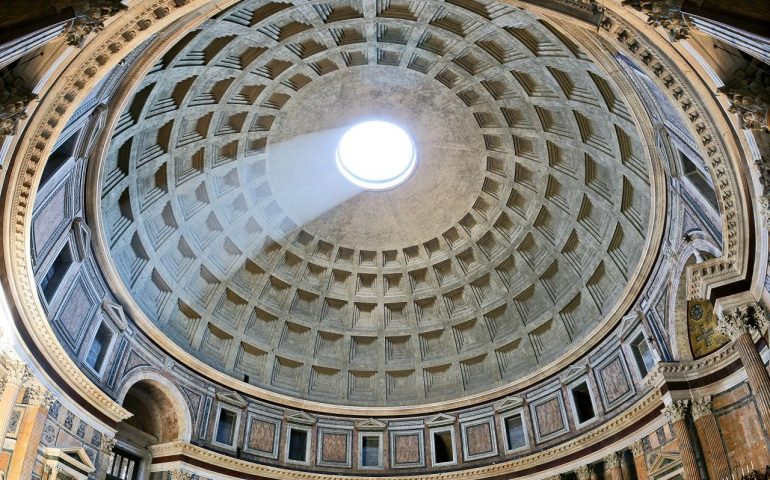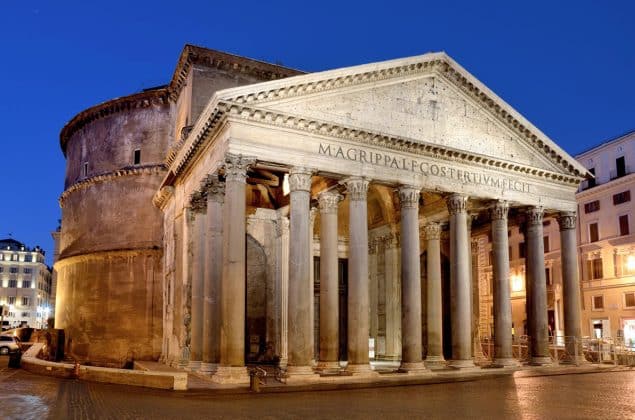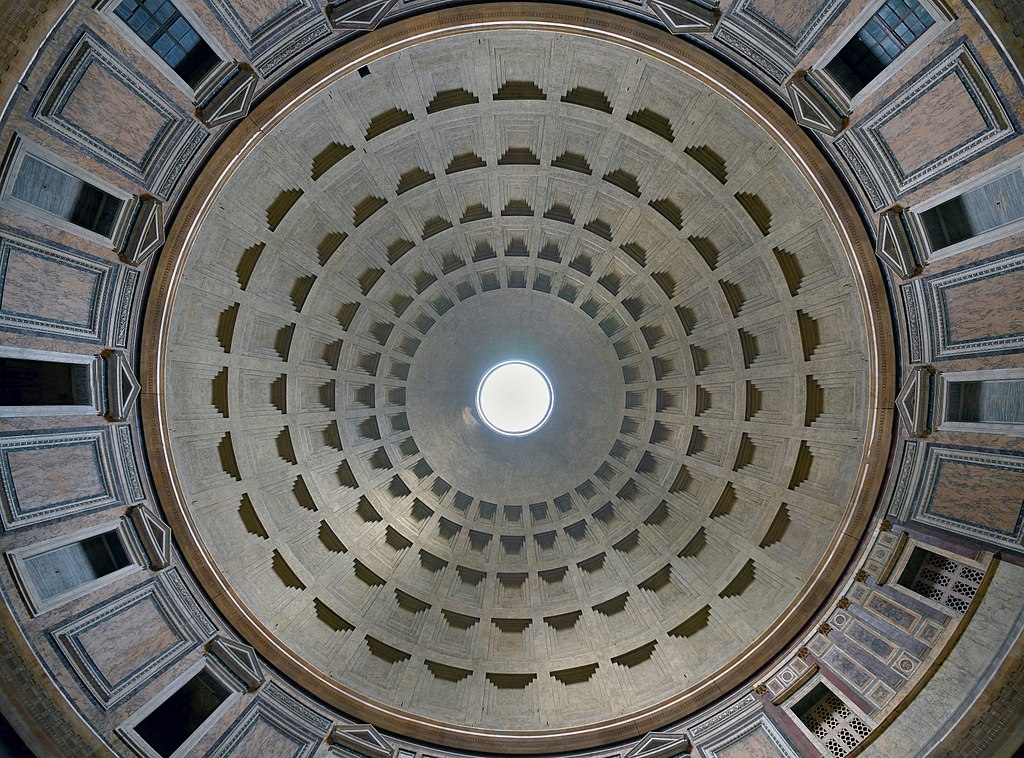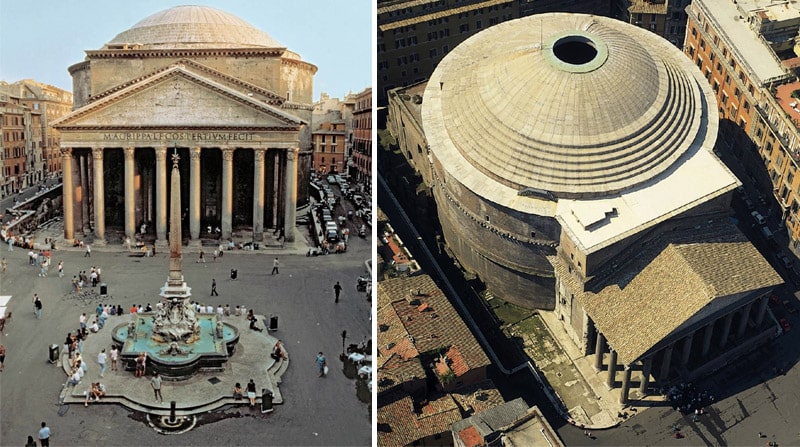Did you know? The Pantheon is the largest hemispherical dome ever built in unreinforced concrete
As for the diameter, today, if we do not consider the roof of the CNIT (Center des nouvelles industries et technologies) in Paris as a dome (in reality it is a cross vault), the dome of the Pantheon in Rome is still the largest. to the world, surpassing both the dome of San Pietro (diameter 42.52 m) and the dome of Brunelleschi in Florence (minor diagonal 41.47 m and the dome of Santa Sofia in Constantinople (greater diameter 31.24).

Despite being so ancient, with its internal diameter of 44.30 m, the dome of the Pantheon is still the largest hemispherical dome ever built in unreinforced concrete.

The Pantheon, located in the Pigna district in the historic center, is a building of ancient Rome built as a temple dedicated to all past, present and future divinities. It was founded in 27 BC. by Marco Vipsanio Agrippa, son-in-law of Augustus. It was rebuilt by the emperor Hadrian between 120 and 124 AD, after the fires of 80 and 110 AD. they had damaged the previous construction of the Augustan age.
The massive use of concrete (opus caementicium) cast between brick faces (opus latericium), makes the building a coherent block whose rigidity ensures good resistance to deformation forces. Depending on the elevation of the building, the concrete used includes a different granular aggregate, suitable for the needs of strength or lightness.

Inside, the dome is decorated with five orders of twenty-eight coffers, twenty-eight was a number that the ancients considered perfect, since it is obtained from the sum 1 + 2 + 3 + 4 + 5 + 6 + 7 and that seven is a a number that indicates perfection, as seven planets are visible to the naked eye. The oculus, which gives light to the dome, is surrounded by a frame of bronze-wrapped tiles fixed to the dome.
A Roman tradition has it that rain does not penetrate into the Pantheon due to the so-called “chimney effect”: in reality it is a legend linked to the past, when the myriad of candles that were lit in the church produced a current of hot air that rose towards the high and that meeting with the rain nebulized it, thus canceling the perception of the entry of water.

The realization was made possible thanks to a series of expedients that contribute to the lightening of the structure: from the use of drawers to the use of increasingly lighter materials towards the top. The dome was built in a single cast on a huge wooden rib.
On the outside, the dome is hidden below by an elevation of the rotunda wall, and is therefore divided into seven superimposed rings, the lower of which still retains the marble slab cladding. The remaining part was covered with gilt bronze tiles, removed by the Byzantine Emperor Constant II in 655, with the exception of those surrounding the oculus, which are still present today. In the eighth century Pope Gregory III restored the roof with lead plates.
